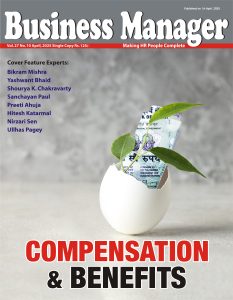In recent years, working from home has gained immense popularity, accelerated by the global shift towards remote work during the pandemic. However, with the pandemic now being a thing of the past, organizations are considering ending remote work / hybrid work / work-from-home arrangements.
Returning to the office decisions have largely been driven by employee polls and feedback. However, several crucial aspects have been missing from this decision-making process, including:
- Data on Remote Work Performance: While employee preferences are considered, there is a lack of comprehensive data on the actual performance and impact of remote work arrangements. Data on work completion, the arrangement’s effectiveness, barriers, and enablers will provide valuable insights for decision-making.
- Manager Input: First-level managers often exhibit resistance to remote work arrangements based on misconceptions about their role and the need for physical presence. Understanding how managers perceive remote work and its impact on key performance indicators (KPIs) is essential. Addressing their concerns and providing proper preparation can minimize remote work barriers.
- Return on Investment (ROI) Analysis: Senior executives, who often make decisions regarding remote work, frequently rely on ROI analysis to weigh costs and benefits. However, such an analysis is rarely conducted for hybrid work arrangements. Incorporating ROI calculations can help executives recognize the financial benefits of remote and hybrid work and potentially change their perspectives.
- Environmental Impact: Surprisingly, there has been little discussion about the positive effects of remote work on the environment. Many executives emphasize supporting the environment and reducing carbon emissions, making it crucial to highlight the environmental benefits of remote and hybrid work when making decisions.
Before placing an embargo, measuring the value and ROI of working in a hybrid or work-from-home environment is critical. It requires a comprehensive evaluation of hybrid work’s success compared to traditional work setups, considering the perspectives of organizations, employees, and the environment. Let us explore the importance of measuring the effectiveness of hybrid work from these three stakeholder perspectives and identify the key factors to consider for a successful evaluation.
To determine the effectiveness and ROI of hybrid work, organizations should evaluate the outcomes from the perspectives of stakeholders: the organization, employees, and the environment.
Stakeholder Perspectives on ROI:
- The Organization’s Perspective:Determining the ROI for hybrid work involves identifying specific impacts on business measures, isolating the effects of the hybrid model, and converting those impacts into monetary benefits. Key areas to consider include:
- Retention: Hybrid work arrangements can contribute to employee retention, significantly reducing turnover costs.
- Office Expenses: Implementing sharing arrangements or hoteling concepts can allow organizations to reduce office expenses associated with maintaining individual workspaces.
- Productivity: Studies indicate that employees are more productive when allowed to work from home or in a hybrid arrangement. Reduced stress and fewer interruptions contribute to higher productivity levels.
- Absenteeism: The flexibility of hybrid work allows employees to work around personal appointments or minor illnesses, reducing absenteeism.
- Quality of Work: The focused and distraction-free environment of remote work can lead to fewer mistakes and higher quality output.
- Intangibles: Additional intangible benefits include job satisfaction, work-life balance, engagement, convenience, stress reduction, and improved recruiting image. Capturing these impacts and converting them into monetary values helps calculate the ROI accurately.
- The Employee Perspective:
While not necessarily requiring an ROI calculation, it is critical to collect and compare the advantages and disadvantages of hybrid work from the employee’s perspective. Consider factors such as job satisfaction, work-life balance, convenience, and personal cost savings related to commuting, parking, and meals.
- The Environmental Perspective:
The environmental perspective encompasses the benefits to the community and the environment. Mayors and city officials encourage remote work to reduce traffic congestion and pollution. Evaluating environmental impact involves calculating fuel savings, converting them into reduced carbon emissions, and considering the positive effects on the environment and community.
To determine the effectiveness and ROI of hybrid work, organizations should evaluate the outcomes from the perspectives of stakeholders: the organization, employees, and the environment. Considering the impact on retention, office expenses, productivity, absenteeism, quality of work, and intangible benefits allows organizations to calculate the ROI accurately. Additionally, collecting employee feedback and recognizing the positive environmental effects of remote work contribute to making informed decisions about hybrid work arrangements. A comprehensive evaluation approach will enable organizations to optimize their hybrid work models, maximize ROI, and create a successful and sustainable remote work environment.
Stay connected with us on social media platform for instant update click here to join our LinkedIn, Twitter & Facebook

























